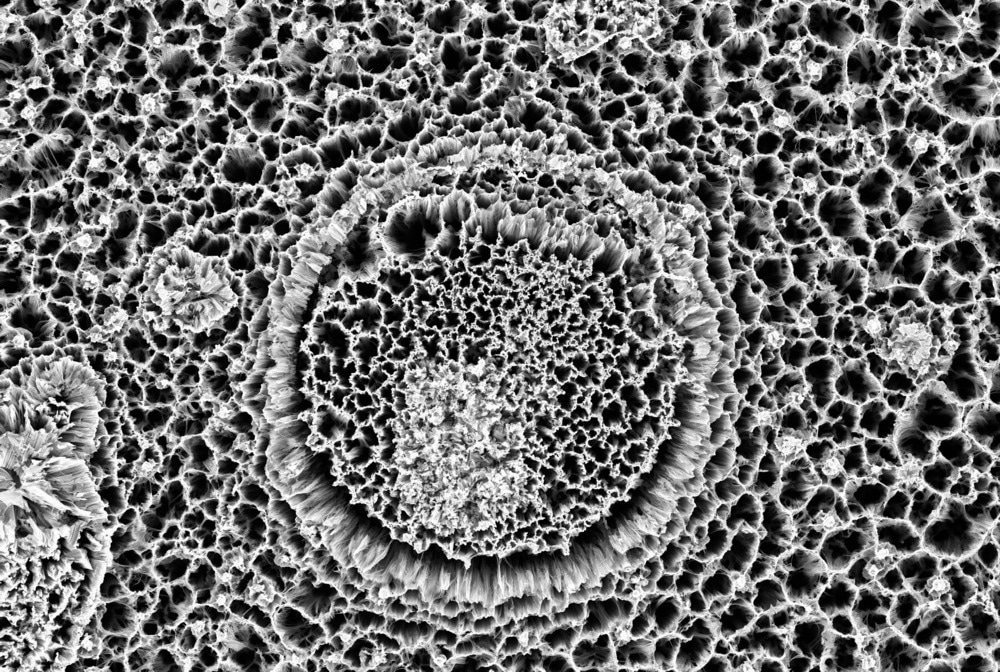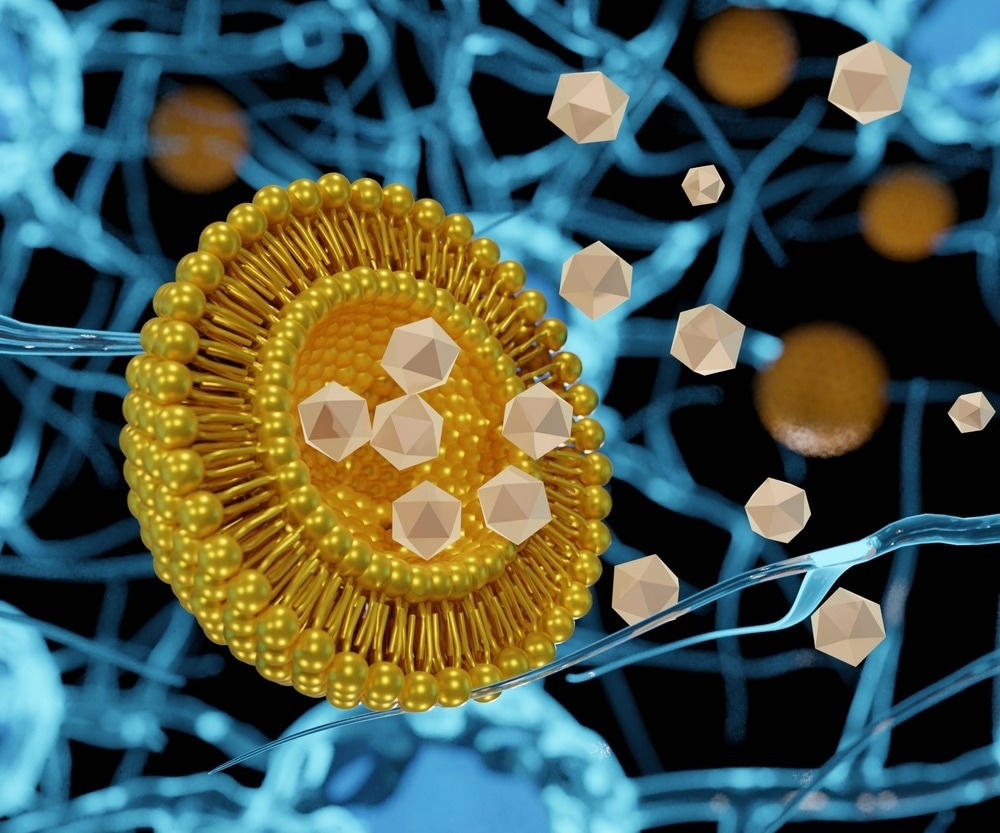What Can Nanotechnology Do?
Over the past two decades, research and development have led to nanotechnology innovations, producing tailored materials with specific properties at the nanoscale. This has significantly expanded the materials science toolkit available to researchers, process engineers, and companies.
Lighter, stronger, more durable, and more reactive nanomaterials have been manufactured. Research has produced materials with enhanced electrical conductivity and complex architectures, making them suitable for multiple applications at the cutting edge of materials science and in numerous scientific fields.
Nanotechnology is a broad discipline that includes diverse scientific fields such as surface science, molecular biology, molecular engineering, organic chemistry, energy storage, and semiconductor physics.
The field has undergone a rapid evolution, with many nanoscale materials and processes making their way out of the laboratory and into everyday commercial products. Specifically, nanotechnology holds the greatest promise for electronics, energy, biomedicine, the environment, and food.
Carbon nanotubes are predicted to replace silicon as the key material for developing next-generation products in electronics. Carbon nanotubes can produce faster and more efficient microchips and quantum nanowires with strength and high conductivity. Carbon nanotubes can create electronics with greater storage capacities, longer battery life, and increased security.
Energy, specifically clean energy, has greatly benefited from nanotechnology. Nanostructured catalysts, for example, are used to improve the efficiency of fuel cells, nanofluids are used to enhance the transfer efficiency of solar connectors, and quantum dots and carbon nanotubes are used to boost energy absorption in solar cells. Nanotechnology will undoubtedly be fundamental to helping the world switch from fossil fuels to renewable energy sources.
In addition, nanotechnology is further helping the environment in its application in improving carbon capture technology. A new carbon capture platform, for example, was developed in 2019 by MIT researchers that used carbon nanotubes in its design. Nanotechnology has yet to reach its full potential in this field, and research continues to explore how it can further improve carbon capture methods.
Nanotechnology has numerous noteworthy applications in biomedicine; however, its biggest achievements lie in the development of novel diagnostic tools, drug delivery systems, and vaccines. There are many potential uses of nanotechnology in biomedicine that are currently being explored; further research in this area has the potential to revolutionize healthcare.
Finally, nanotechnology is being leveraged in the food industry to help us tackle one of the biggest challenges to humanity: the food crisis.
As the world’s population continues to swell, our already-stretched agricultural systems will need to produce significantly more food. Scientists have recognized that reducing food waste is an important tool in addressing food availability, given that a third of food is wasted. Recently, scientists have used nanoparticles to create novel coatings for fruit that extend its shelf-life. Innovations in nanotechnology such as this will be fundamental to helping us increase food security in the future.

Image Credit: Thanakorn.P/Shutterstock.com
The Global Nanotechnology Market
Many experts believe that nanotechnology will bring about a new era of productivity and wealth, and this is reflected in the growth in public investment in technologies and research over the past two decades.
The global nanotechnology market was valued at $1.76 billion in 2020. By 2030, this is predicted to rise to around $33.63 billion, representing a compound annual growth rate of 36.4%. However, the COVID-19 pandemic and associated lockdowns limited the market’s growth in 2020 and 2021.
Segments of the global nanotechnology market are also showing promising growth. The global graphene market was valued at 175.9 million in 2022 and is expected to grow at an impressive CAGR of 46.6% from 2023 to 2030. In addition, the global lipid nanoparticle market was valued at 777.4 million in 2022 and is expected to grow at a CAGR of 13.6% through 2029.
Nanotechnology research has a global footprint, with major players in the US, UK, Europe, and Asia-Pacific region. Globally, according to the US National Nanotechnology Initiative, there are around 20,000 researchers working in the field. The Asia-Pacific region is predicted to see the highest growth in the coming decade.
Many global organizations are now investing in emerging applications in the nanotechnology market. Nanodevices are predicted to be the most lucrative market segment over this decade, and many emerging trends are accelerating growth in the nanotech field.
While the growing adoption of nanoscale materials and devices in biomedical and engineering fields is driving significant growth in the global nanotech market, there are some key challenges that hinder the widespread commercial adoption of devices.
Major restraining factors are the high cost of technologies and their performance and reliability in extreme weather conditions. However, increased government support and funding and the emergence of innovative self-powered devices are predicted to offer lucrative opportunities for the market in the coming years.
There are several companies currently investing in nanotechnology research, including Thermo Fisher Scientific, eSpin Technologies Inc., Biosensor International, Kleindiek Nanotechnik GmbH, and Altair Nanotechnologies Inc. Several collaborations between companies and academic institutions are ongoing.
Countries such as Brazil, India, the Philippines, Chile, Mexico, and South Africa have established government-funded programs and research institutes, with many developing nations emerging as frontrunners in nanotechnology research. The nanotechnology market is one of global cooperation and endeavor.

Image Credit: Roberto Lo Savio/Shutterstock.com
Types of Nanomaterials
Nanomaterials can broadly be categorized into four types: inorganic-based nanomaterials, carbon-based nanomaterials, organic-based nanomaterials, and composite-based nanomaterials.
Inorganic-based nanoparticles are generally non-toxic, hydrophobic, biocompatible and highly stable. They are often used in biomedicine applications due to these properties. Examples of inorganic-based nanoparticles include metal and metal oxide nanomaterials.
Carbon-based nanoparticles have low toxicity, are stable, and have high electrical conductivity, flexibility and optical transparency. Their properties lend them for use in sensing applications, among others. Examples of carbon-based nanoparticles include graphene, fullerene, and carbon nanotubes.
Organic nanoparticles are biocompatible, biodegradable, and non-toxic. Examples of organic nanoparticles include liposomes, layered biopolymers, dendrimers, protein aggregates, lipid bodies, and milk emulsions.
Composite-based nanoparticles have properties such as ductility, high strength, electrical conductivity, heat resistance, and increased barrier properties. They are often used in sensor technology. Composite-based nanoparticles encompass a vast range of materials that are constructed by combining various pairs of nanoparticles. Many composites use carbon nanotubes, quantum dots and graphene within the pairs of materials.
Quasi-one dimensional nanowires have been produced from materials such as carbon, silicon, germanium, and conductive metals such as copper. Polymer and carbon nanofibers have a large surface area-to-volume ration, good mechanical strength, high porosity, and functionalization flexibility compared to microfibers.
Carbon nanotubes have remarkable thermal and electrical conductivity and exceptional tensile strength. The properties of carbon nanotubes have led to interest in them in multiple fields. Quantum dots are semiconducting nanocrystals with unique properties between discrete molecules and bulk semiconductors.
More on how nanotech is used in energy storage, here:
Nanocomposites are manufactured from two different constituent materials (typically a polymer and an inorganic solid such as clay or oxide) with their own unique chemical or physical properties, producing a material with superior properties to its constituent materials. Some are up to 1,000 times tougher than bulk components.
Graphene is perhaps the most well-known nanomaterial. It was discovered in 2004 by Andre Geim and Konstantin Novoselov. The material has unique properties; it is strong yet flexible and lightweight with high resistance. It is also the thinnest material ever discovered and is 200 times stronger than steel.
Thanks to these advantageous properties, the material has found applications in electronics, energy storage, composites, coatings, biomedical devices, sensors, drug delivery, tissue engineering, and more. One of its most memorable applications was its use in a groundbreaking graphene-based MRI contrast agent, which allows for improved disease diagnosis.
MXenes are two-dimensional layered ceramic materials made from a bulk crystal called MAX. These materials have excellent conductivity and volumetric capacitance and are often used in energy storage, optoelectronics, and in medicine. They have great potential as antibacterial agents.
Lipid nanoparticles are simply nanoparticles made from lipids. They have made headlines recently due to their use in COVID-19 mRNA vaccines as mRNA carriers. The material has also been used successfully in small-molecule delivery in nanomedicine.
Quantum dots are nanoscale crystals with semiconducting properties that were first discovered in 1980. Their core is often made of heavy metal, such as cadmium selenide, lead selenide, or indium selenide. They can convert the spectrum of light into different colors and are used in an array of applications, including drug delivery, diagnostics, medical imaging and solar cells. Quantum dots also have the potential to support the development of the quantum computer.
Carbon nanotubes are constructed from rolled-up sheets of graphene. Their excellent electrical conductivity and mechanical strength have seen carbon nanotubes adopted by a number of industries in a range of applications, including targeted drug delivery, nerve cell regeneration, aircraft construction, energy storage, water purification, coatings, electronics and more.
Applications of Nanotechnology
Materials and Processes
Nanotechnology can make many everyday materials stronger and provide enhanced functionality. Many commercial products containing nanomaterials are commercially available. These include:
- Durable, washable smart fabrics with embedded flexible nanosensors and electronics for use in medicine, health monitoring, kinetic energy harvesting for self-power purposes, and environmental monitoring in industries such as mining.
- Clear nanoscale films for displays, eyeglasses, and windows to improve waterproofing, enhance self-cleaning capabilities, improve electrical conductivity, and protect against UV radiation.
- Nanoscale additives for lightweight ballistic armor.
- Nanoscale materials in automotive components such as low rolling-resistance tires, thin-film smart solar panels, and battery systems.
- Nanoscale catalysts to boost chemical reactions.
- Nanomaterials in improved personal care products and household products.
- Smart packaging for the food industry with embedded nanoscale sensors to detect issues such as spoilage.

Image Credit: Blue Andy/Shutterstock.com
IT and Electronics
Nanomaterials are already being used in many IT and electronics applications (listed below). There is also much work undergoing to leverage the materials’ excellent electrical conductivity along with other beneficial properties to shift the electronics sector, making quantum computing and atomic electronics possible.
- Nanoscale transistors.
- Magnetic random access memory systems that utilize nanometer-scale magnetic tunnel junctions.
- Ultra-high definition displays incorporating quantum dots.
- Mechanically flexible electronics which can withstand mechanical deformation for use in wearable electronics, medical applications, IoT devices, and smartphones.
- Conductive inks for printed electronics.
- Improved flash memory chips for thumb drives and smartphones.
- Electronic paper.
- Light-emitting diodes (LEDs).
- Lasers.
- Batteries.
Biomedicine and Healthcare
Nanotechnology holds vast promise for the fields of healthcare and medicine, providing benefits such as better drug delivery, enhanced diagnostic and prevention capabilities, and novel therapies. Nanomedicine is an emerging field that takes inspiration from biological phenomena. Most notably, nanomaterials were fundamental in the development of SARS-CoV-2 (COVID-19) vaccines. Its applications include:
- Gold nanoparticle-based probes for the detection of targeted gene therapies.
- Gold nanoparticle-based treatments for cancer and other diseases.
- Improved diagnostic and imaging tools.
- Advanced solid-state nanopore materials enable low-cost, high-throughput single-molecule detection and novel gene sequencing technologies.
- Targeted drug delivery using nanocapsules for improved treatment of diseases such as cancer with minimal side effects.
- Regenerative medicine and neural and bone tissue engineering.
- Graphene nanoribbons for spinal injury treatment and regeneration.
- mRNA carriers in vaccines.
- Needle-free vaccine delivery.
- Drug carriers.
Restorative nanomaterial-based dental resins and materials that mimic human bone crystal mineral structure.

Image Credit: Love Employee/Shutterstock.com
Energy
Nanotechnology is being utilized in alternative energy production and harvesting to meet the world’s clean energy demands. Many scientists are investigating the use of nanoscale materials and devices to reduce energy consumption, environmental toxicity burdens, and develop clean, affordable energy. Applications include:
- Nanoscale catalysts for improved fuel production efficiency.
- Reducing fuel consumption in power plants and vehicles by optimizing combustion efficiency and decreasing friction using nanomaterials.
- Nanotechnology-enabled gas lift valves to improve offshore oil and gas extraction.
- Carbon nanotube membranes and scrubbers for CO2 filtering and carbon capture in power plants.
- Carbon nanotube wires to reduce transmission power loss in electric grids.
- New generations of nanomaterial-based batteries and energy storage devices.
- Carbon-nanotube epoxies create stronger, lightweight, and longer wind turbine blades.
- Thin-film photovoltaic solar panels for enhanced solar harvesting.
Nanotechnology in agriculture: Read more here.
Environmental Remediation
Environmental remediation applications include:
- Water purification: Durable graphene-based water filtration membranes to remove environmental contaminants such as heavy metals from industrial wastewater with self-cleaning capabilities and long lives.
- Nanoparticles for cleaning industrial wastewater pollutants in groundwater.
- Thin-film nanoporous MoS2 membranes for energy-efficient desalination.
- A potassium manganese oxide nanowire-based nanofabric “paper towel” for oil spillage clean-up applications.
- Nanotechnology-enabled sensors for environmental pollution monitoring and air quality sensing.
Transportation
Nanotechnology provides benefits to the transportation industry by producing lightweight, energy-efficient multifunctional materials for multiple components and applications in automobiles, planes, ships, space exploration, and infrastructure. These include:
- Polymer nanocomposite structural components.
- High-powered rechargeable batteries.
- Thermoelectric materials for temperature control.
- Low-cost, highly efficient nanoscale sensors and electronics.
- Nano-engineered transport infrastructure materials such as concrete, cementitious materials, steel, and polymer composites to improve resilience and longevity.
- Nanotech-enabled lightweight, high-strength materials for the aerospace industry.[7] [8]
What Are the Concerns With Nanotechnology?
Some experts have urged caution in nanotechnology research over the years due to existential concerns about its progress. Eric Drexler, who coined the term “nanotechnology” in 1974, warned against the unchecked development of nanodevices and the potential threat they could cause to society.
Although Drexler’s warnings have been widely discredited, many concerns remain regarding the effects of nanotechnology on human and environmental health.
Activists worry that the science and development of nanotechnology will progress faster than policymakers can devise appropriate regulatory measures. According to activists, an informed debate must take place to determine the balance between benefits and risks.
Toxicology
Research has shown that nanoparticles accumulate in the nasal cavities, lungs and brains of rats, and that carbon nanomaterials known as 'buckyballs' induce brain damage in fish.
Vyvyan Howard, a toxicologist at the University of Liverpool in the United Kingdom, has warned that the small size of nanoparticles could render them toxic and warns that full hazard assessments are needed before manufacturing is licensed.
Many parties have expressed their concern over releasing tiny nanoscale particles, which, because of their small size, are able to penetrate far into the environment.
Some experts have warned that we do not yet know how these particles will act in the environment or what chemical reactions they will trigger upon meeting other particles. However, experts concur with nanotechnology advocates who feel the field may offer 'cleaner' technologies, and, ultimately, a cleaner environment.
The primary concern is that there is a lack of research into nanotechnology's potential threats to human health, society, and the environment.
Long-Term Safety of Nanomaterials
Similar to the concerns raised over the toxicity of nanomaterials are the concerns regarding their long-term safety. Given the growing body of research suggesting that, due to their small size, nanomaterials may have a toxic effect on humans and the environment, it is sensible to consider how exposure to this potential toxicity may accumulate over time.
Some research has suggested that nanoparticles do have the power to accumulate in the body over time, particularly those that do not degrade rapidly. Some research has indicated that, in particular, these nanoparticles can accumulate in the liver and spleen. Studies have also linked nanoparticle exposure to chronic inflammation and it is even theorized that the materials may drive the spread of cancer. More research is needed to gain a deeper understanding of how nanomaterials impact the body in the long-term.
Commercialization
While nanotechnology has caused waves in many industries, having been developed for several groundbreaking applications, nanotechnology still faces some barriers before it can reach its full potential. One concern relates to its scaling up for mass manufacture. This requires a sizable investment that many industries are not prepared to make. It also requires a drastic amount of ups killing, which, again, comes at a cost.
There is also a noticeable difference between manufacturing nanomaterials in the lab to manufacturing them on an industrial scale. It requires careful planning and the adjustment of complex methodologies that require expert guidance.
Availability of Resources/Materials
While there is some concern over the availability of resources required to produce nanomaterials, particularly if their production is scaled up, many of the required materials are easily accessible. Although many of the metals used in nanomaterials are mined, some of the most common, e.g. silicon, titanium, iron, are abundant on the Earth.
Regulation
Given the relative newness of the sector, regulations surrounding nanotechnology are still in development. The FDA has stated that it will regulate nanotechnology under existing statutory authorities. It intends to ensure predictable and transparent pathways regarding their regulation. It should be considered, however, that it is an evolving industry, which will likely correspond to evolving regulations, which manufacturers must keep up to date with.
The ISO has around 100 standards regarding nanotechnologies. These may be difficult to navigate while the industry is new and companies enter the space for the first time. Over the years, this will be less of a problem as employees develop expertise in this field.
Where is Nanotechnology Going?
Although there has been significant growth in technological capability and knowledge over the past few decades, there are still some unanswered questions about nanotechnology’s future. Ethical concerns are largely unresolved and still up for debate. However, it is undeniable that nanotechnology is here to stay.
Assessing the role of nanotechnology and guiding its progression will require cross-sectoral involvement of scientists, governments, civil society organizations and the general public.
In the next three years, we can expect continued development from nanotechnology, and along with it, further scientific breakthroughs. Given the focus on and heavy amount of research in the field, it is likely that nanotechnology will achieve significant advances in nanomedicine for diagnostics, targeted therapy, and imaging.
We will also likely see developments in smart devices thanks to nanotechnology, such as improvements to hygiene and cleanliness of devices, the development of novel surfaces and nanocoatings, increased performance and battery life, and miniaturization. It is also likely that advanced 2D nanomaterials like graphene and MXenes will see further commercialization.
Pinpoint the top 5/6 applications that nanotechnology is relevant to and expand on these applications. Mention why nanotechnology is a 'game-changer' for these applications.
References and Further Reading
National Nanotechnology Initiative (website) Applications of Nanotechnology [online] Available at:
https://www.nano.gov/about-nanotechnology/applications-nanotechnology
Divyanshi, T (2021) Nanotechnology Market By Type (Nanosensor and Nanodevice) and Application (Electronics, Energy, Chemical Manufacturing, Aerospace & Defense, Healthcare, and Others): Global Opportunity Analysis and Industry Forecast, 2021-2030 [online] alliedmarketresearch.com. Available at:
https://www.alliedmarketresearch.com/nanotechnology-market
Purohit, R et al. (2017) Social, Environmental and Ethical Impacts of Nanotechnology Materials Today: Proceedings 4:4 Part D. pp. 5461-5467 [online] sciencedirect.com. Available at:
https://www.sciencedirect.com/science/article/pii/S2214785317307691
Tatalovic, M (2019) Nanotechnology: a blessing or a curse for developing nations? [online] scidev.net. Available at:
https://www.scidev.net/global/features/nanotechnology-a-blessing-or-a-curse-for-developing-nations/
Studious Guy (website) Nanomaterials: Types & Examples [online] studiousguy.com. Available at:
https://studiousguy.com/nanomaterials-types-examples/
|